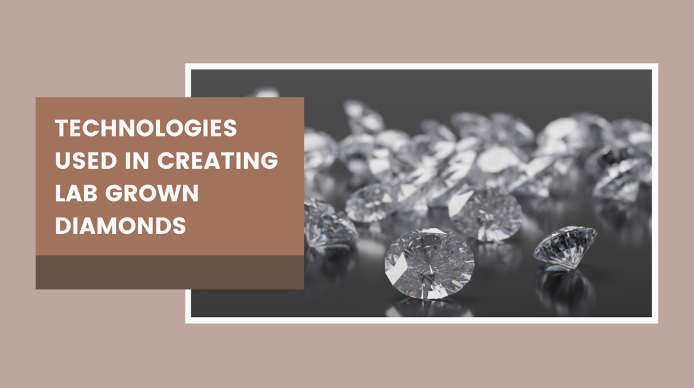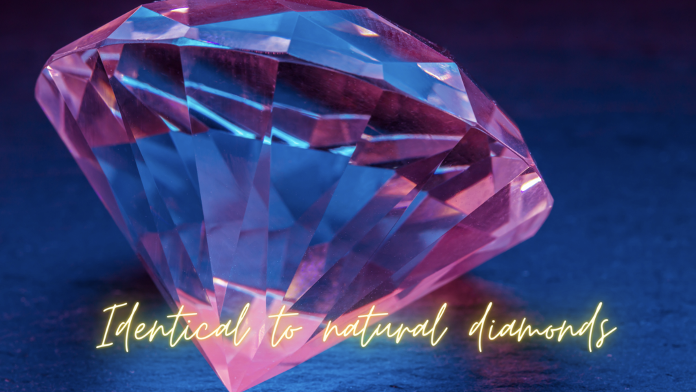Technologies Used to Create Lab-Grown Diamonds

In basic science, we learn that diamonds are carbon compounds. Diamonds form deep in the earth’s core. Here, there is high heat and pressure.
In the past, people sought diamonds by mining the earth. This process was tedious and needed special skills. It was also a dangerous job to walk through mines, sifting sand and soil for these precious stones.
There was also the precious of purifying diamond ores. This put the miners and diamond smiths at risk of pneumoconiosis and other diseases.
Hence, it is such a relief that science has provided a way out of mining diamond ore. There are now lab-grown diamonds available in the gem and jewelry market.
Lab-grown diamonds have all the properties of natural diamonds. These do not have the hazardous effects that occur in the processing of natural diamonds. So, you are not at a disadvantage when you buy lab-grown diamonds.
For the next wave of trendsetters, sustainability is key. But that doesn’t mean compromising on style, and Gen Z knows the best way to make a statement is with sparkles! Check out the new lab-grown diamonds – they look just as gorgeous, without the environmental cost of natural diamonds.
Certified and conflict-free, lab-grown diamonds are making it possible for conscious consumers to innovate jewellery trends without going bankrupt. Let’s take a closer look at how you can add some bling to your wardrobe this season, in an ethical and sustainable way!
Lab-Grown Diamonds – An Overview
Lab-grown diamonds, otherwise known as artificial, engineered, and cultured diamonds, offer an incredible opportunity to experience the beauty of natural diamonds without sacrificing ethical standards.
By using modern technology, experts are able to replicate the very same conditions found in the mantle of Earth’s crust where natural diamonds form. As a result, lab-grown diamonds consist of genuine carbon atoms that share the exact same chemical and optical components as those found in nature — making them nearly indistinguishable.
When you buy lab-grown diamonds, you get to enjoy the same spirit-lifting brilliance of a natural diamond while still adhering to your personal values.
What Are the Benefits of Lab-Grown Diamonds
A lab-created diamond is as genuine as diamonds you mine. They both are subject to the same conditions of temperature and pressure.
They also share the same physical and chemical characteristics. But, lab-grown diamonds do not have controversial ethical procedures. This makes them a better option than natural diamonds.
Here are some benefits of lab-grown diamonds:
1. Lab-grown Diamonds are Affordable
A perfect example of affordable but superior quality of diamonds are lab-grown diamonds.
Have you ever dreamed of owning a sparkling diamond without emptying your pocket? Well, now it’s time to start shopping around! Lab-grown diamonds are becoming the new must-have for any jewelry lover.
Not only are they beautiful and just as flawless as mined diamonds, but they’re less expensive and come with an ethical bonus. Lab-grown diamonds not only offer savings on what would be considered a luxurious expense, but their production leaves a much smaller ecological footprint than traditional mining does.
With lab-grown diamonds, you can have it all, from stylish diamond wedding rings to romantic diamond earrings, or a beautiful tennis bracelet, at a fraction of the cost.
2. Safe for the Environment
Gemstone quality diamonds are becoming ever-more accessible for everyday use and jewelry thanks to the rise of lab-grown diamonds.
Using only renewable energy sources and cutting-edge technology, scientists are able to recreate the same physical and chemical makeup of natural diamonds without the environmental impact or bankrupting price tag.
With just a few clicks you can browse from a selection of diamond rings, diamond earrings, and diamond necklaces that are as beautiful and as ethically sustainable as can be!

3. Almost Identical to Natural Diamonds
Not only are lab-grown diamonds just as sparkly and beautiful as natural diamonds, but they often boast better quality and a purer hue due to modern technology advances.
For those looking to buy either lab-grown or natural diamonds, it’s essential to consult a trustworthy jeweler and laboratory with the latest technology to make an educated decision. Skilled gemologists may be able to discern between the two by closely examining the individual characteristics provided by advanced equipment – but having a professional at your side never hurts!
But you must know that both diamonds do not vary in their durability. They are both beautiful and look perfect on any jewelry.
Technologies Used to Create Lab-Grown Diamonds
In the laboratory, there are two diamond production methods. The first process is chemical vapor deposition (CVD).
The second process is the high-temperature/h-pressure process. The chemical vapor deposition method is most famous for producing jewelry. The high temperature is famous for producing diamonds for industrial use.
Let’s discuss the processes of making lab-grown diamonds:
1. Chemical Vapor Deposition (CVD)
The scientist begins the CVD by pouring a mixture of gases into a chamber. These gases include oxygen, carbon, and hydrogen. To these gases, the scientist adds a sliver of diamond seed. You can also use graphite for this step.
The next step involves heating the chamber to temperatures from 8000C -9000C. The scientist uses a hot filament, lasers, or a microwave to heat the chamber.
The heat causes carbon precipitation from the mixture of gases. This precipitate starts to form crystals. Next, the scientist stops the diamond-making process at intervals. This is to clear the graphite crystals around the diamond.
By growing diamonds on a nanostructured seed substrate, the process uses a gas to deposit carbon elements on the seed creating a true diamond that has identical physical and optical properties to mined diamonds!
Note:
Most times, people want colorless diamonds. To have colorless CVD diamonds, they must undergo heat treatment.
2. High Pressure/High Temperature (HPHT)
The HPHT process starts by placing a capsule into a press. The capsule contains a small diamond seed, carbon starting material, and a metal flux. The metal flux is a mixture of metals. The carbon starting material is often graphite. This process involves using powerful machines to pressurize a carbon source to replicate Earth’s natural forces and make a real, synthetic diamond almost identical to mined stones!
In this technology, the scientist uses temperatures between 1,3000C and 1,6000C. They also use a pressure of about 59,200 atm. The pressure and temperature liquefy the carbon source. The metal flux comprises if cobalt, nickel, and iron. They help to reduce the heat conditions of the diamond-making process.
The HPHT also takes about two weeks. The processing period depends on the desired diamond quality and size.
Note that the HPHT presses can be cubic, belt, or split-sphere. These presses have their differences. Yet, they all create beautiful diamonds.
Conclusion
Lab-grown diamonds also have the same grades as natural diamonds. Grading of lab-created diamonds focuses on the diamond cuts, color, clarity, and carat.
Lab grown diamonds are the ultimate modern indulgence; they provide an opportunity to own a diamond without compromising on style and quality. Not only are these diamonds beautiful and affordable, but they’re also socially conscious choices – giving you the chance to make ethical decisions that look good, too. So if you want a stunning piece of jewellery that will help to create a more sustainable future, look no further than lab-grown diamonds.






